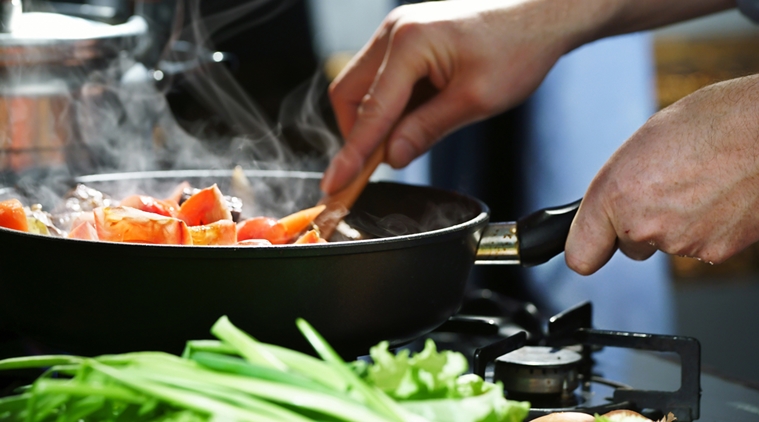 Good cookware is an integral part of cooking and can have far-reaching impact on health (File Photo)
Good cookware is an integral part of cooking and can have far-reaching impact on health (File Photo)
Good cookware is an integral part of cooking and can have far-reaching impact on health. Cookware should be safe, convenient and durable. A variety of materials are used to make cookware today. The selection is usually dictated by cultures, cuisine and preferences. It’s important to understand the difference between materials and how they affect us in order to make the best choice.
* Cast Iron is heavy, inexpensive and doesn’t rust easily. Heat is conducted slow and even making it ideal to be used in the stove or oven. Frying pans, saucepan and sometimes kettles are also made of this metal. Food cooked in iron vessels will have enhanced iron content. In India, where anaemia is a major public health concern, iron pots are thus highly desirable.
* Copper (tamba) and its alloy with zinc, brass (peetal) are not too heavy and are good conductors of heat. However, they are easily tarnished and reactive to acids and salt. This can cause food poisoning. Organic acids from food can lead to excessive copper, which can be detrimental to health. Therefore, they must be coated with tin (kalai). However, being soft, the tin coating wears off rapidly. Bronze, an alloy of copper and tin, is heavy and strong but brittle and costly too.
* Aluminum cookware is light, strong, corrosion resistant, conducts heat well and is inexpensive. Pressure cookers are made of this metal. However, it is extremely soft and reactive. Contact with strong acids, alkalies and salt causes it to dissolve. Also, vigorous stirring and scrubbing during washing causes the metal to wear off. Aluminium in our body can inhibit absorption of important minerals like iron and calcium. It may also accumulate in bones leading to ‘de-mineralisation’ (softening) of bones. Aluminium deposits have also been found in brain tissue of Alzheimer’s disease patients.
* Stainless steel cookware is strong, highly durable, rust-proof and easy to handle. However, it is not a good conductor of heat and may cause food to burn due to uneven heat distribution. This disadvantage has been overcome by the use of copper bottom stainless steel.
* Non-stick cookware cuts back on fat consumption and doesn’t allow food to stick on the pan. It’s also easy to clean. However, some concerns regarding PFOAs (perfluoroctanoic acid, a suspected carcinogen) associated with it have been raised. A tear on the surface should be avoided. Do not use abrasive cleaners or stack the pans one on top of the other, and always use wooden spatula.
* Hard anodised aluminium vessels are non-stick, durable and easy to clean. It prevents reaction with acidic foods and leaching of aluminum. It conducts heat well and is reported to be harder than steel.
* Ceramic pottery is unfit for cooking unless glazed, which helps resist wear and tear. Poor quality glaze can be a source of lead & cadmium, which can be poisonous upon ingestion.
* Enamel-coated cookware are colourful, stain, scratch-resistant and does not pick up food odour. With proper care, a fine enamel pot lasts a lifetime, whereas a thin enamel layer that chips easily can be harmful to health.
* Microwave plastics should be used with caution. Only those specifically made for microwave use should be used. Avoid visibly damaged, stained or unpleasant smelling plastics and containers.